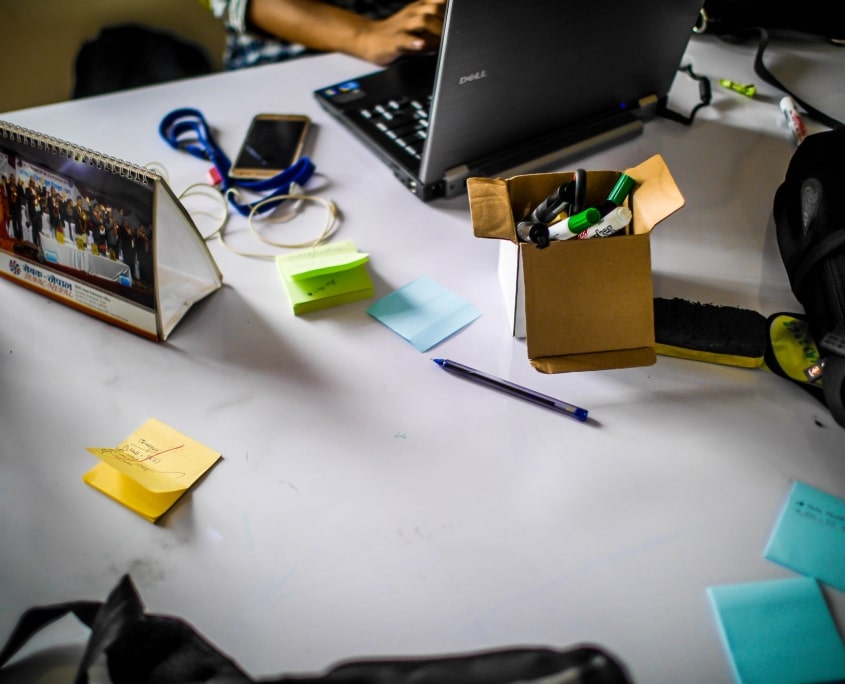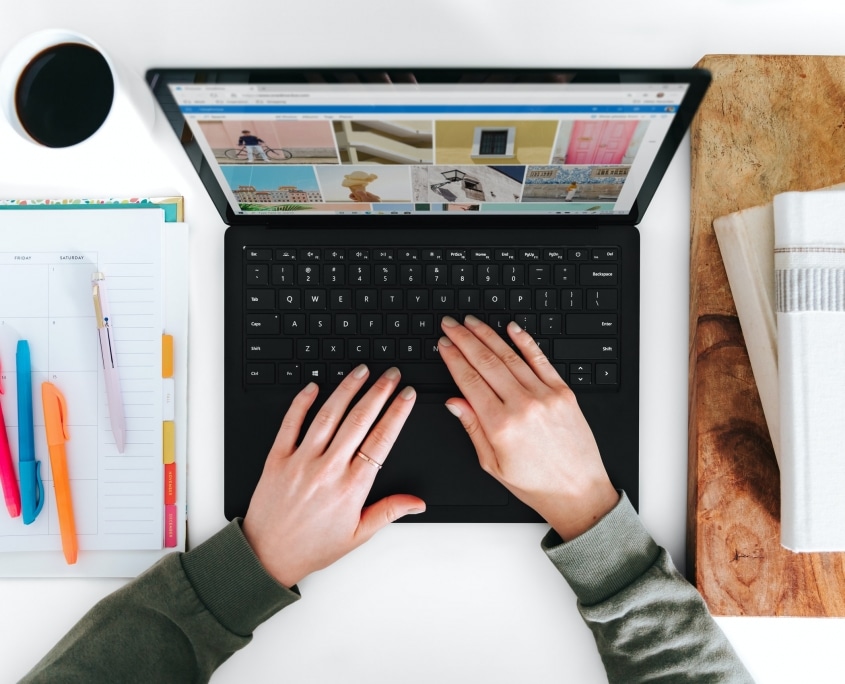You do not need a complicated approach or a complex system to remedy your lack of overview. On the contrary. Keep it as simple as possible. (Keep It Simple, Stupid) Only then you can actually create a workflow that works! Therefore: bring structure into your (working) day? Stick to this one rule.
When you are collecting information everywhere…
From the moment you open your eyes in the morning until you close them again at night, a huge amount of information is fired at you.
You are receiving a number of emails, you are finding a tax envelope in your letterbox, you are updated on the state of affairs at that meeting and on top of that a colleague tells you about a new idea at the coffee machine .
You collect all this information.
Some of it you do consciously. For example, you make notes during that meeting or you mark that email because it contains important information.
But the vast majority of it is stored unconsciously. Your colleague’s idea, for example – very interesting. “I’ll definitely have to think about that.” You store the information in your memory or write it down in your phone. However, you never do anything with it…
Why?
Because you keep information in different places. You can’t see the forest for the trees.
The result?
You will have so many places where information (and therefore potential work) accumulates, that you will not only spend a lot of time looking for it (“Where did I make those notes again?”), but you will even miss important input.
… and that affects your productivity.
You will have trouble assessing all the tasks on your plate and will therefore only work on the first job that presents itself – you will work reactively. A waste of your precious time.
Work in an organised way? kiss (in 3 steps)
So what you need is a system. One with which you can bring order out of chaos. A workflow that prevents important information and context from getting lost. One that is especially simple.
So simple that it takes no effort to keep it up and make a habit of it. Keep It Simple, Stupid – KISS, for short. You work with 1 rule. 1 approach.
Never organise tasks in the place where you collect them.
That’s the only thing you need to remember – 1 sentence. 10 words. The more gathering places you have, the harder it is to keep track. The first step towards organised working is therefore to manage these gathering places.
This can be done in 3 steps:
1. Identify the gathering places you’re using now
First of all, you need to map out all your gathering places. Because the more of them you have, the greater the chance you’ll overlook information or work.
Most of these places you allready know. Your mailbox, for example, or the mailbox at the office. You use them daily and are aware of their existence. But apart from that there are also hidden gathering places. Places where, without realising it, you also collect valuable information – think of your wallet (where you keep those petrol receipts) or the notes app on your phone (for those spontaneous, good ideas).
You will also need to be aware of these gathering places if you want to get organised. So think deep – or just use this handy checklist that we also use during our 1-day Time Management training.
2. Choose a few fixed gathering places and eliminate the rest
Once you have a good idea of where all the information is coming in, you start by cutting them down. You drastically reduce the number until you don’t have more places than necessary.
Here are a few examples:
Mental input
- That idea that pops into your head? You no longer keep it in your head, but record it. Again, in 1 fixed place – with the braintoss app, for example.
- Always have a fixed notebook at hand instead of scribbling on loose paper – 1 paper notepad, for example.
Physical input
- Did you attended a training session or an off-site meeting? Keep the papers or handouts you have received neatly together in 1 folder that you keep in your bag.
- The blue letter from the tax authorities or the memo you found in your mailbox at the office? At home and at the office, use 1 box where you collect all your physical mail.
Digital input
- Several e-mail inboxes? Automatically redirect all your mail to 1 business inbox.
- Digital information that you don’t need at the time, but do need to keep (your pension statement or your employment contract for example), you keep in 1 digital filing cabinet. Evernote for example is perfect for that.
You get the idea. You collect all physical, mental and digital input in 1 – specifically designated – place. So your brain knows at all times:
“If I need an invoice, I know I can find it in folder x. If I’m looking for a specific note, it can only be in that notepad.”
Do this for all your gathering places.
3. Process these places regularly
To be able to work in an organised way, it’s important that you process these places regularly. Of course not more often than necessary.
You don’t check your inbox every 15 minutes, but you do this at two fixed moments during the day. You update your notes once a day and check your mail once a week. After a while you will develop a routine.
4. Put it in your time management system
As you work through your gathering places, you will come across work – something you still need to do. Take the letter from the tax office, for example. It needs to be paid. Or how about that e mail? You can see that it contains a number of things that you want to discuss at tomorrow’s team meeting. .
In other words: what do you do with the input that comes from processing your gathering places? Simple: you process it and record it in one convenient time management system.
How that works is explained in detail in the following article. There, you will learn how to process and neatly record the input using one simple method.
Until then: keep it simple, stupid
Collect input and information consciously. In no more places than necessary. This prevents you from working reactively and therefore preventing important information from disappearing to unfindable places. You regain overview and know where important information is at all times.
The method is simple:
-
- You are aware of all your gathering places – the obvious ones, but also hidden ones.
- You minimise them until you have no more places than necessary – 1 collection mailbox, 1 notebook, 1 tray…
- You process these places regularly – using one method, in one time management system.
In short: reduce, optimise and process, this is how you deal with the information that is fired at you daily. The result? Overview, organised work and rest. That is all you need!
Account manager




